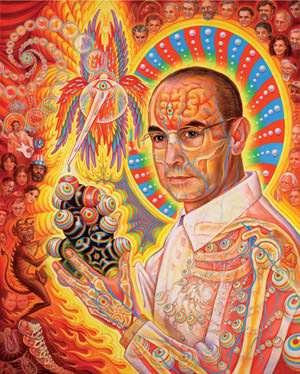Artifact: Turn On, Tune In, Drive a Computer Revolution

In January the Swiss inventor of lysergic acid diethylamide, Albert Hofmann, turned 100 and was honored at a Basel symposium called "LSD: Problem Child and Wonder Drug." Hofmann first synthesized the hallucinogen in 1938, and the pharmaceutical giant Sandoz (now Novartis) began marketing the drug as a treatment for psychological problems a decade later. By the time LSD was banned in the U.S. in the late 1960s, it had been vilified as a leading cause of social unrest, sitar music, black-light posters, and worse.
The Basel conference included presentations by psychedelic artist Alex Grey (whose painting St. Albert and the LSD Revelation Revolution is to the right) and Hofmann himself (who says his first deliberate self-experiment with LSD was a bad trip that induced paranoia and anxiety).
Missing from the slate of speakers were, arguably, LSD's two best-known "problem children," Microsoft's Bill Gates and Apple's Steve Jobs. As John Markoff, author of What the Dormouse Said: How the 60s Counterculture Shaped the Personal Computer, told a D.C. audience at a December event hosted by the Copyright Clearance Center, both have acknowledged the formative effect of dropping acid, with Jobs going so far as to call it "one of the two or three most important things that he'd done in his life."




Show Comments (2)